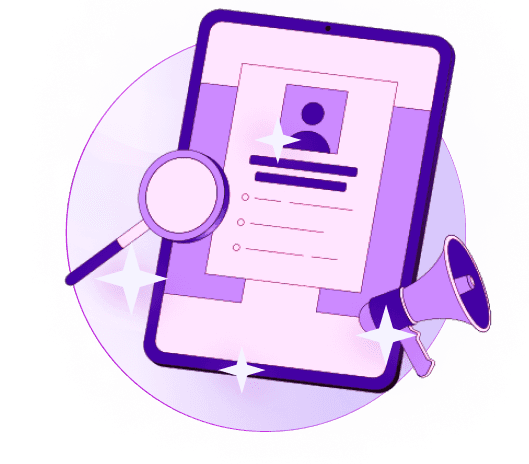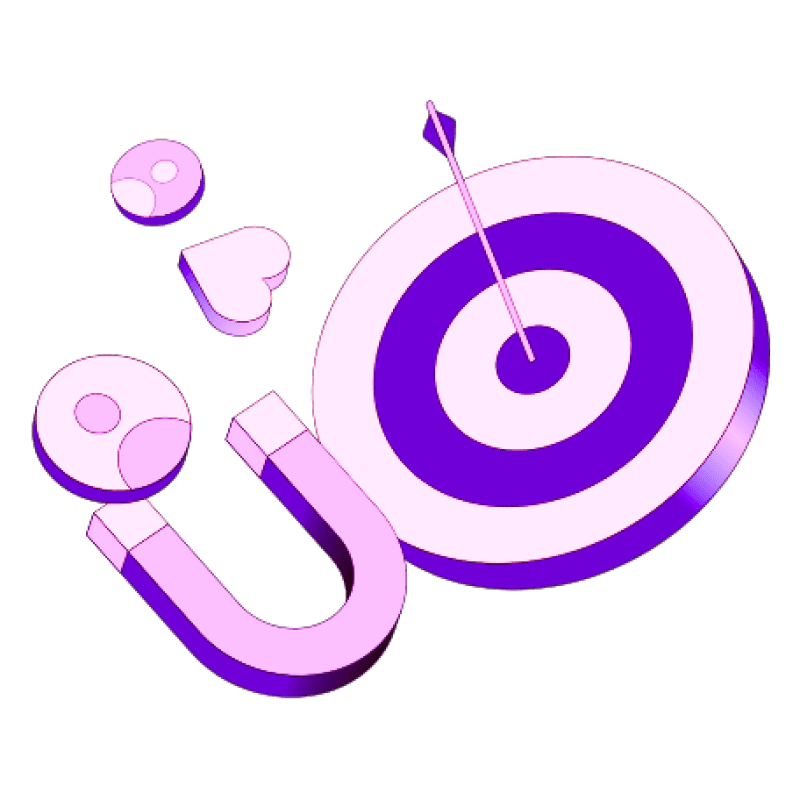Blogs
Articles

How to Build a Sales Cadence Automation System That Actually Works
Here's a surprising fact: salespeople spend only 36% of their time selling.
The numbers tell an interesting story. Sales representatives lose 20% of their time on CRM admin work. They spend another 21% researching leads and 31% creating or searching for content. Sales cadence automation has become crucial for modern sales teams because of these inefficiencies.
This piece will guide you through building a sales cadence automation system that delivers real results. We'll cover everything from choosing the right tools to fine-tuning your strategy. Our goal? To revolutionize your sales process and help you reclaim valuable selling time.
What is a Sales Cadence and Why It Matters?
Sales cadences serve as the foundation of modern sales operations. Random outreach attempts pale in comparison to a well-laid-out approach that delivers consistent results and keeps your pipeline flowing.
Sales cadence definition and purpose
A sales cadence represents a predefined sequence of sales activities and touchpoints spread across set intervals that salespeople use to involve prospects. These touchpoints include emails, phone calls, social media interactions, text messages, and in-person meetings - all timed strategically to work better.
The value goes beyond simple organization. Your team needs a roadmap to interact with potential customers, and a well-implemented sales cadence provides exactly that while bringing predictability and order to your sales process. Your prospects receive equal attention whatever team member handles the account.
Sales teams with a predefined cadence can concentrate on high-value activities like relationship building rather than deciding contact timing for each prospect. Research shows that all but one of these top-performing sales reps need five touchpoints to book a meeting.
Difference between manual and automated cadences
Manual sales processes eat up valuable selling time. Sales teams dedicate 64% of their time to non-sales activities, which leaves only 36% for actual sales outreach. On top of that, manual processes face a 26% error rate in data entry and lead tracking.
Automated sales cadences streamline repetitive tasks so your team can focus on building relationships. Companies that use automated sales cadences see a 16.5% increase in efficiency and a 12.3% boost in revenue. These systems will give a consistent follow-up and provide up-to-the-minute data analysis that helps refine your strategy.
Common use cases in B2B and outbound sales
B2B companies rely heavily on sales cadences for outbound prospecting. Sales development representatives (SDRs) generate business through outbound prospecting or respond to inbound marketing leads.
Outbound sales cadences typically feature 8-12 touchpoints over 17-21 days. This timeframe creates a balance between consistent engagement and relationship building. B2B sales demand persistence - 80% of sales need at least five follow-ups.
Sales cadences help leaders scale their contact strategy throughout the organization while maintaining consistent messaging and approach. This structured framework enables teams to handle more clients, close more deals, and prevent overwhelming buyers with too much communication.
Core Elements of a High-Performing Cadence
Building effective sales outreach takes more than persistence—you just need strategy and structure. Let's get into the core elements that make a sales cadence work.
Choosing the right outreach channels
Sales outreach success comes from an omnichannel approach. The best sales cadences employ every available contact channel. Top performers include more than 10 touches in a variety of platforms. Your strategy should include:
Phone calls (still highest-converting channel for B2B)
Email (for detailed information and tracking)
Social media (especially LinkedIn for B2B connections)
SMS (with proper opt-in permission)
Research shows outbound sales cadences should reach prospects through at least three different channels to match modern buyer's priorities. Your channel selection should arrange with your target audience's communication habits and industry standards.
Timing and frequency of touchpoints
The perfect rhythm makes all the difference. Data reveals that contact rates drop by 63% after seven outreach attempts. Cadences lasting 6-8 days show the highest contact rates. Spacing of 1-2 days between attempts proves most effective.
Studies suggest 8-12 touchpoints over a 14-21 day period deliver the best results. Quick response times can make or break deals—sales reps who respond within 24 hours see contact rates 3.7X higher than those who delay.
Personalization and segmentation
Generic outreach rarely captures attention. Customer segmentation helps tailor your approach to specific groups and boosts loyalty and conversions. Segment your audience based on:
Industry and company size
Job title and pain points
Behavioral patterns and engagement history
Research backs this up—personalized emails generate 6x higher transaction rates than generic templates. One company saw a 12% jump in upsell success rates after launching segmented campaigns with personalized offers.
Exit criteria and lead status updates
Clear exit conditions help avoid awkward follow-ups with engaged prospects. Exit criteria should focus on lead status fields that show where contacts sit in your sales pipeline. Your system should:
Update lead status automatically based on engagement
Remove prospects who become disqualified or move to nurture status
Set up lead status change notifications to keep teams arranged
Poor exit management might lead to automated emails going out after live conversations—a credibility-damaging mistake you can't afford.
How to Automate Your Sales Cadence System
Sales cadence strategy becomes reality with proper automation tools and setup. Here's how you can build a system that gets results.
Selecting the right sales cadence software
Your sales cadence automation success starts with the right software choice. Your chosen platform should combine smoothly with your current CRM. Look for tools that help you connect with prospects through email, phone, and social media.
You'll need features like automated follow-ups based on triggers (email opens or clicks), smart scheduling, and protection for deliverability. Top platforms also come with AI-driven personalization, team features, and ways to score leads.
Market data shows the global CRM market will hit USD 80.00 billion by 2025, with 12.6% yearly growth. This growth shows how much businesses need quick ways to engage with sales prospects.
Setting up email cadences and follow-ups
After picking your software, know your target audience and set clear goals for each cadence. Build a logical sequence that matches your sales process - first emails, follow-up calls, and reminder messages.
Set the right time gaps between touchpoints. You can add leads one by one or automatically based on specific rules. Make sure to set rules for when leads should exit the cadence, like after they respond or when deals close.
Smartlead helps you schedule emails based on your prospect's timezone and triggers follow-ups automatically. You might want to check out our AI solution at Persana to create messages that appeal to your prospects.
Integrating CRM and automation tools
Your sales cadence platform must work naturally with your CRM system. This helps data flow between systems without manual entry.
Modern tools capture every activity, add contact details, and update buyer data in your CRM. Most platforms work with 25+ popular CRMs, helpdesks, and productivity tools. This uninterrupted connection lets data move freely between apps.
Using templates and dynamic fields effectively
Templates help maintain consistent messages while saving time. You can create and customize templates for common scenarios and quickly add frequent content. Dynamic fields automatically add recipient details to make mass outreach feel personal.
Advanced systems use AI to analyze buyer data and write relevant emails quickly. These tools achieve 100% accuracy in categorization, which helps boost engagement and conversion.
Compliance and opt-out management
Your emails must follow CAN-SPAM regulations, whether sent individually or through automation. This means you need a clear way to opt out, a real postal address, and honest header information.
Commercial emails need obvious opt-out options and correct sender details. Notwithstanding that, if someone replies positively, later messages in that conversation are usually considered wanted and might not need an unsubscribe link.
Your automation platform should support these compliance rules to keep your sender reputation strong and avoid legal problems.
Optimizing and Scaling Your Cadence Over Time
Sales cadence systems need constant fine-tuning. The real work starts after you implement the system - making it better over time.
Tracking key metrics like open and reply rates
Specific metrics help measure performance effectively. A good open rate should be around 20%, while reply rates between 3-6% show strong participation. B2B companies typically see email conversion rates of 1-3% with 23% open rates. Call-to-connect rates above 5% stand out as excellent.
Your tracking should go beyond simple metrics:
Bounce rates (should stay below 2%)
Meeting booking rates (10%+ is good)
Pipeline progression and time-to-conversion
Unsubscribe rates
The team's performance becomes clear when you track these metrics for individual reps.
A/B testing subject lines and timing
Your system improves through methodical testing. Different email versions help identify what works best. Here's what you should test:
Subject lines to boost open rates
Send times and frequencies
Email lengths and content formats
Call-to-action variations
Personalization elements
Test each component separately to see what strikes a chord with your audience. Salesloft users can run step variants to compare performance side by side.
Adjusting based on buyer behavior
Prospect responses should shape your cadence. Look at engagement timing and sequence completion rates to spot where prospects drop off. You might need to replace or adjust touchpoints that consistently drive prospects away.
Your prospects and sales reps can give valuable feedback about what works.
Using analytics to improve performance
Modern analytics tools turn raw data into useful insights. Salesloft Analytics gives you a complete view of the customer lifecycle. This helps you spot patterns in successful cadences.
The next step is to look at the whole sales process, not just individual metrics. Persana.ai can help optimize your entire sales cadence system through AI-powered analytics.
Your optimization efforts should never stop. Review your cadence analytics at least monthly to stay flexible and maintain top performance.
Conclusion
Sales teams need an effective sales cadence automation system to win back their lost selling time. Research shows that salespeople waste nearly two-thirds of their workday on tasks unrelated to selling. This makes automation crucial for any team's success.
A well-laid-out sales cadence transforms the way teams connect with prospects. Random outreach doesn't work anymore. The best results come from a structured sequence of 8-12 touchpoints across multiple channels. The right mix of channels, timing, personalization, and exit criteria creates a system that maximizes every interaction while respecting prospect's priorities.
Moving from manual to automated processes needs careful planning. Your system's success depends on choosing the right software, uninterrupted CRM integration, and well-crafted templates. The work invested in proper setup leads to increased efficiency and better conversion rates.
Note that making your system better never stops. You can spot areas to improve by tracking key metrics like open rates, reply rates, and meeting bookings. A/B testing different parts of your cadence helps you fine-tune your approach based on real data instead of guesses.
Key Takeaways
Building an effective sales cadence automation system is crucial for modern sales success, as salespeople currently waste 64% of their time on non-selling activities. Here are the essential insights to transform your sales process:
• Implement a structured 8-12 touchpoint sequence across multiple channels over 14-21 days to maximize prospect engagement and maintain consistent outreach without overwhelming buyers.
• Choose automation software that integrates seamlessly with your CRM and supports multi-channel outreach, follow-up triggers, and compliance management to streamline your entire sales process.
• Focus on personalization and segmentation based on industry, job title, and behavioral patterns - personalized emails deliver 6x higher transaction rates than generic templates.
• Track key performance metrics religiously - aim for 20% open rates, 3-6% reply rates, and continuously A/B test subject lines, timing, and content to optimize results.
• Define clear exit criteria and lead status updates to prevent embarrassing follow-ups after live conversations and maintain professional credibility throughout the sales process.

Create Your Free Persana Account Today
Join 5000+ GTM leaders who are using Persana for their outbound needs.
How Persana increases your sales results
One of the most effective ways to ensure sales cycle consistency is by using AI-driven automation. A solution like Persana, and its AI SDR - Nia, helps you streamline significant parts of your sales process, including prospecting, outreach personalization, and follow-up.



